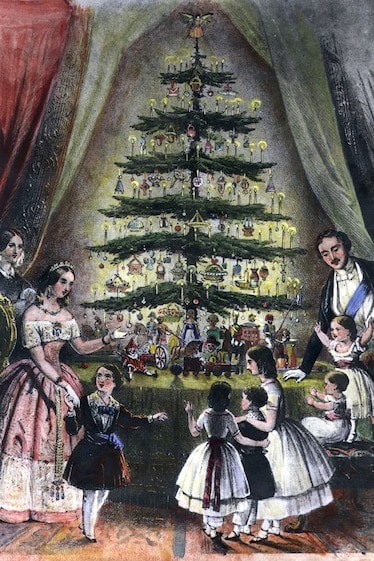The Christmas season has here, bringing with it delicious delicacies, magnificent decorations, and chic clothes. On this day, people all across the world commemorate the anniversary of Jesus Christ’s birth. During this time, kids wait for Santa Claus to fly down and bring them presents. People offer prayers for success, joy, and harmony. At this time of year, people gather with their loved ones and friends to enjoy a day filled with celebrations, food, and joy.
Christmas has many traditions, but probably none is more well-known than the tradition of magnificently adorned Christmas trees. Whether they are real or artificial, without these, the festival would not be considered complete. Check out how these trees came to be such a prominent part of Christmas traditions all around the world. (Also read: Christmas 2022: Tips to decorate Christmas tree with your kid )
When did Christmas trees originate:
The origins of the actual Christmas tree custom may be found in 16th-century Germany, where Christians started to adorn trees within their houses, or, in hard times, simple pyramid-shaped piles of wood. Martin Luther, the founder of the Protestant Reformation movement in the 1500s, is most frequently credited with starting the custom of lighting candles on tree branches. By the 18th century, Christmas trees were a frequent sight throughout Germany, and towns all along the wealthy Rhineland were lighting them with wax candles. The Christmas tree was seen in the 19th century as a representation of German culture, especially among Germans who had immigrated abroad.
What does the Christmas tree symbolize:
The winter solstice was celebrated in ancient societies as the start of longer, lighter days and a sign that the Sun God was recovering vigour. Evergreen trees were celebrated in conjunction with the solstice as a reminder of the upcoming warmer months since they maintain their colour throughout the four seasons.
The modern Christmas tree:

The London News published a picture of Queen Victoria and her German husband, Prince Albert, standing in front of a Christmas tree with their kids in 1846. The couple and their family were well-liked by her people, and as a result, the Christmas tree spread fast throughout American culture as well as Britain. Despite the fact that not all Christian cultures historically decked their houses with evergreens and gifts, the influence of the West and the rise of consumerism have made the Christmas tree a universally recognised emblem. In reality, the Christmas tree has been embraced by many individuals of various religions (See Japan for instance). Throughout the 20th century, dazzling electric lights and synthetic materials, such as tinsel, replaced homemade decorations. This was due to scientific and industrial advancements.
Stay connected with us on social media platform for instant update click here to join our Twitter, & Facebook
We are now on Telegram. Click here to join our channel (@TechiUpdate) and stay updated with the latest Technology headlines.
For all the latest Festivals and Events News Click Here
